What is Paid Media? A Complete Guide With Examples
Abirami Dharmalingam
September 3, 2025
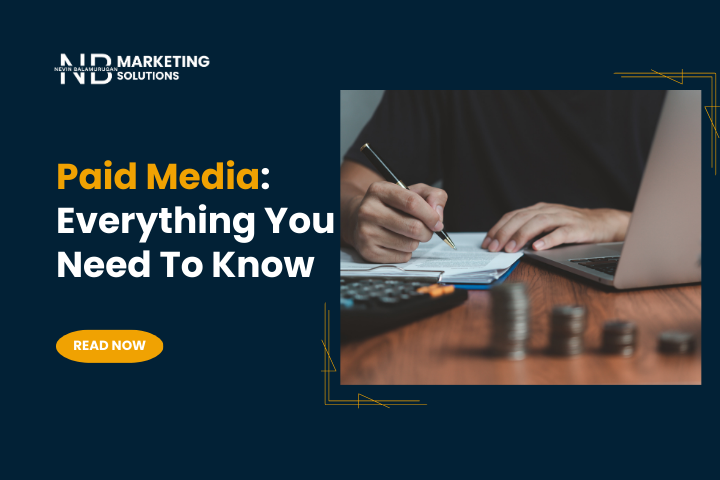
Paid Media: Definition, Types, Examples & 6 Step Framework
You want your brand to be seen by the right people, at the right time, in the right place.
That’s where paid media comes in.
Datareportal shows that people often discover new brands through various types of paid channels: 32.3% through TV ads, 29.7% via social media ads, 25.8% on brand websites, 32.8% on search engines, 21.7% through mobile ads, 78% through video ads, and 22.5% through consumer review sites.
Moreover, all these paid ads appear at the top search results, where people discover new brands. So, you can reach more customers (who you want to reach) and achieve your goals.
In this blog, we’ll explore everything about paid media, the different types with real-world examples, and share a 6-step framework to create a paid campaign.
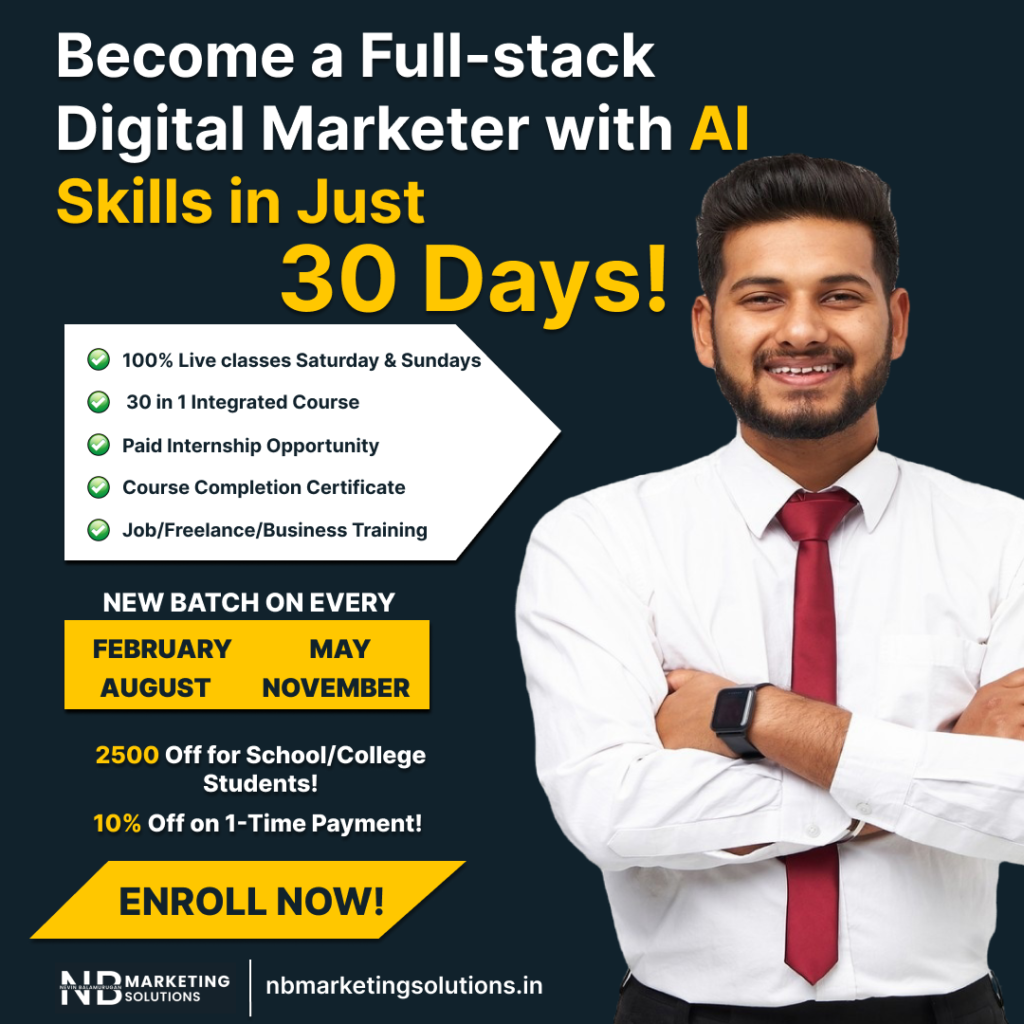
What is Paid Media?
Paid media is a type of marketing where you pay to promote your content, products, or services. It includes channels like search ads, social media ads, display banners, and influencer partnerships. This is a way to buy attention and drive traffic, leads, or sales.
Types of Paid Media Channels
Now that we’ve defined what paid media is, let’s explore the different types of paid media channels and the unique purposes they serve with examples.
But before we jump into the channels, it’s worth clarifying an important distinction between ad channels and ad formats.
- Ad channels are the platforms where your ads appear (like Google, Facebook, or LinkedIn).
- Ad formats are the specific types of ads you can run within those channels.
For example, on Google you might see:
- Search ads that show up on the results page
- Shopping ads that highlight products with images and pricing
- Video ads that appear on the Google partner network
- Banner ads appear on the web pages across the Google Display Network
- Display ads appear across the Google Display Network
So, while formats determine how your ad is presented, channels determine where your ad appears and how it reaches. Now, let’s focus on the channels to see how your ad appears with an example.
Search Engine Marketing (SEM)
Search engine marketing is commonly known as search engine advertising or paid search. This type of advertising puts your ad at the very top of search results for keywords your customers are actively typing into Google or Bing.
Google dominates the search market, over 83% of global search engine traffic comes from this. This is one of the first paid media channels where advertisers experiment because it captures people with high purchase intent.
SEM allows you to bid on relevant keywords so that when a customer searches for “best running shoes for men,” your ad appears.
You can note the “sponsored” label that appears before the ads to distinguish them from organic results.
Examples of Search Engine Marketing
1. Google Ads
When searching for “best CRM software” on Google, the first position with a sponsored label is an example of Google search ads.
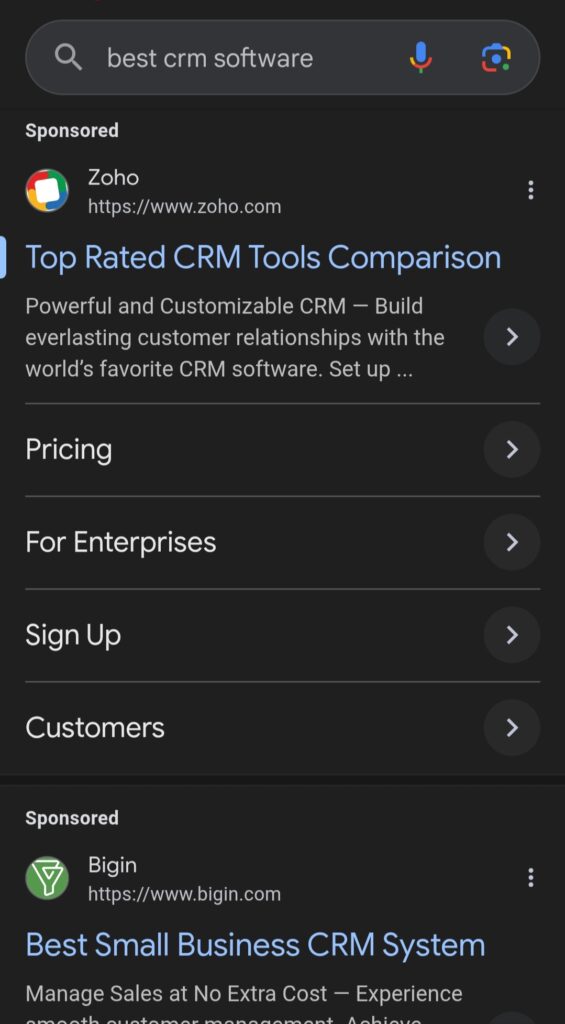
Now, let’s search for a product like “best running shoes for men”, the paid ads below are a shopping ad format.
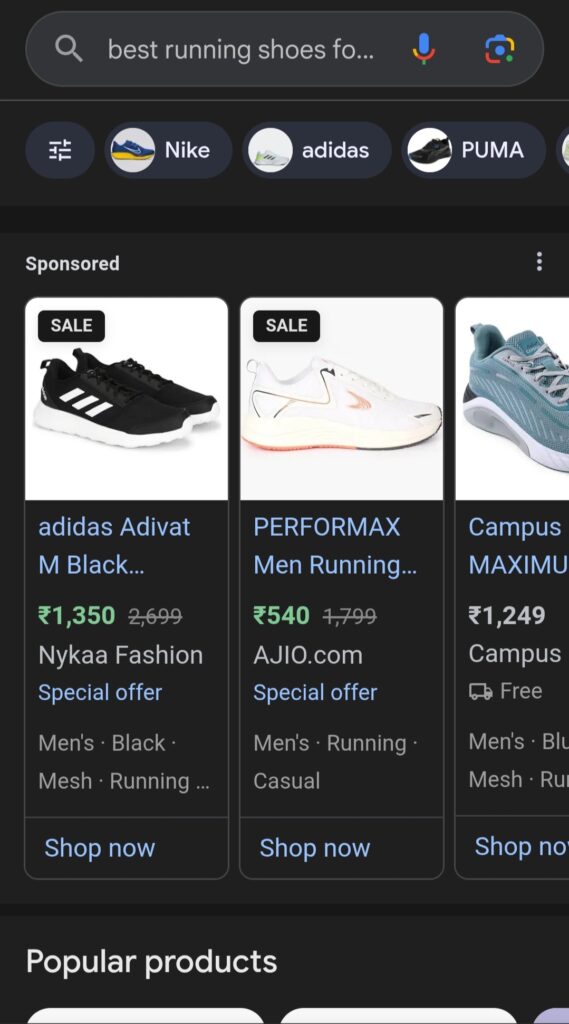
2. Microsoft Bing Ads
While searching for the same search on Microsoft Bing, the paid ads appear.
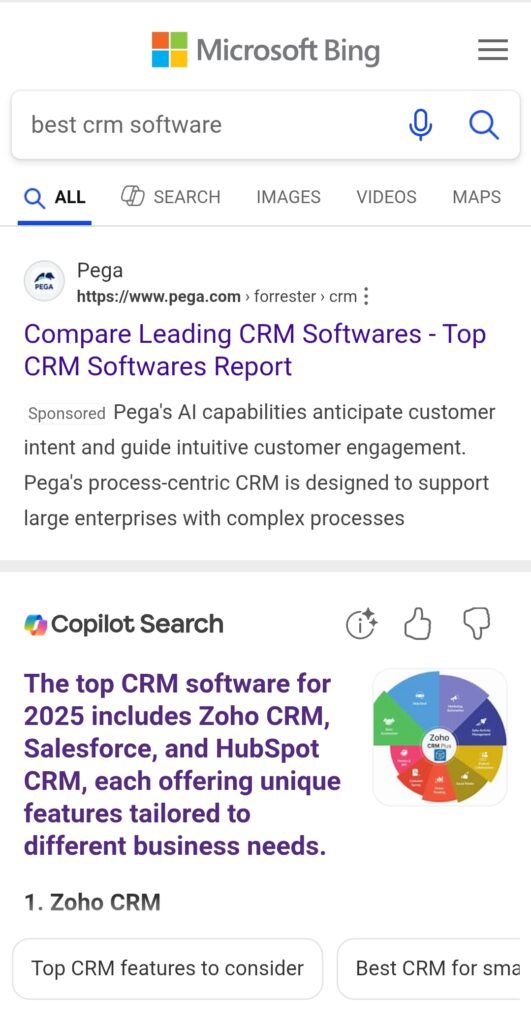
Paid Social Media Marketing (SMM)
Search doesn’t matter – this allows you to target customers based on who they are. Many of the platforms offer detailed targeting options based on demographics, interests, and audience behaviors. Some of the most common social media platforms are:
- TikTok
- Snapchat
- X (Twitter)
You may have a question, why marketers specifically focus on social media platforms to reach the brand’s presence. People spend an average of 2 hours and 23 minutes per day on social media globally. More importantly, 26% of customers say they discover new brands through social ads.
You can use most common ad formats like in-feed ads, carousel ads, stories, or reels – but it depends on your goal, budget, and brand.
Example of Paid Social Media Marketing
Each social platform’s ad formats look different within their respective newsfeeds. Below, we have given four examples for social media advertising.
1. Facebook

Here’s an example of paid media advertising on Facebook. This sponsored post by 360 Learning appears in relevant customers’ feeds, enticing them to download the e-book.
2. Instagram
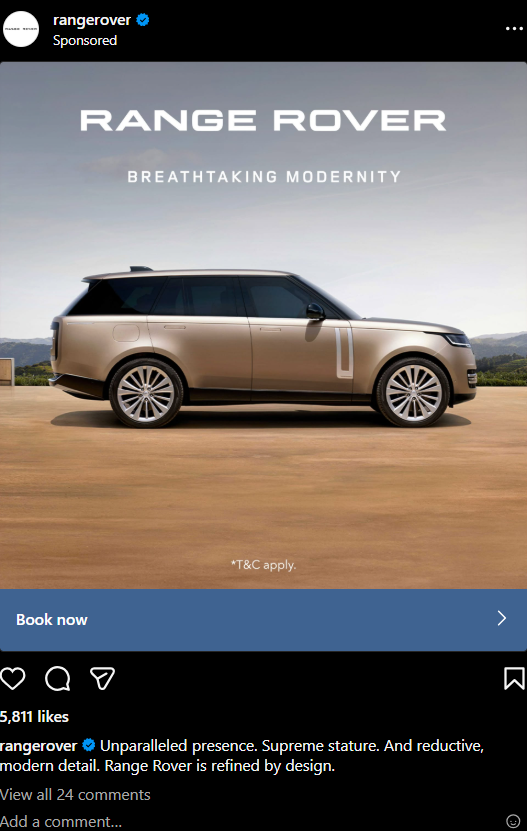
Here’s an example of paid media advertising on Instagram.
3. LinkedIn
In the LinkedIn ad below, Scaler prompts customers to attend a masterclass to become a MAANG Engineer..
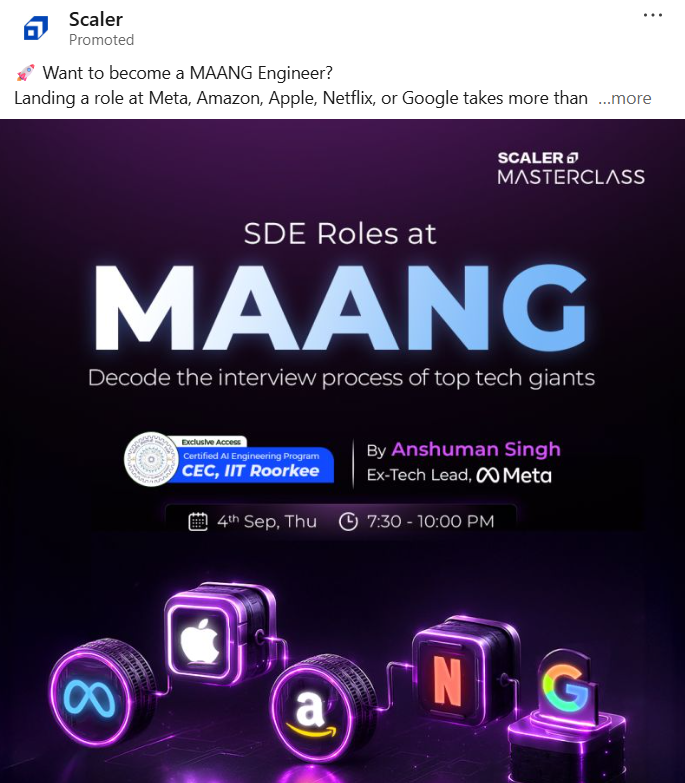
Here’s an example of paid media advertising on LinkedIn. This platform is best for B2B businesses to target professional people related to their niche.
4. Pinterest
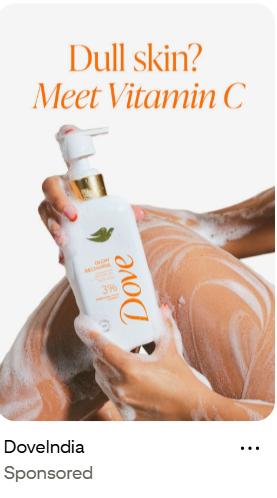
Here’s an example of paid media advertising on Pinterest.
Display Advertising
When you think of display advertising, banner ads usually come to your mind as colorful boxes that you see across blogs, news sites, and apps. These campaigns are often run through the Google Display Network, which reaches 90% of global internet users through thousands of websites.
Display ads rarely convert cold audiences on the first click, but they’re powerful for brand visibility and remarketing. So, you can use it for seasonal promotions or product launches for product awareness.
Example of Display Advertising
Display ads can come in various shapes and sizes, depending on the website or app. Below is an example of a display ad in different formats on one webpage.
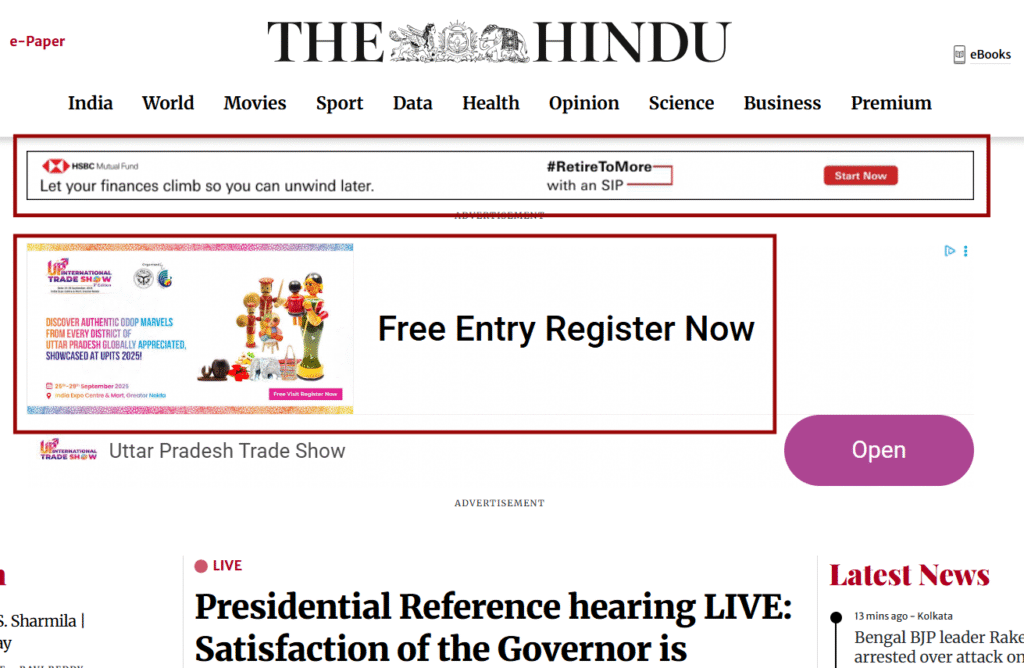
Image Credits: The Hindu
Sponsorship
Influencer marketing is another way of native advertising. This is a way to connect with your audience to build trust. Instead of speaking directly to your customers, you partner with influencers who promote your product or service to their engaged communities.
This marketing works on platforms like Instagram, TikTok, YouTube, and LinkedIn, where creators have loyal followers in niches such as lifestyle, beauty, fitness, B2B, and tech.
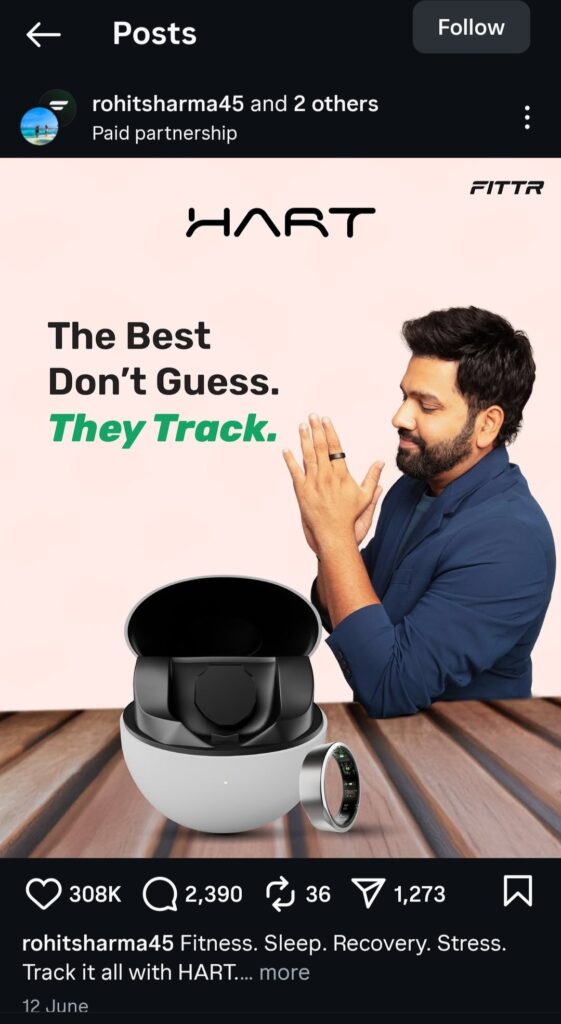
Image credits: Instagram
Have no idea how to choose an influencer for your brand? Check out our blog to partner with the right influencer.
Example of Sponsorship
Sometimes, influencer advertising can be difficult to spot. Because the creator blends your product with their original content in a perfect way.
Check out the Instagram post below. For example, the influencer has an engaged following – the post has over 140,000 likes, which suggests a better return-on-investment (ROI) for the advertiser or brand.

How to Create a Perfect Paid Media Campaign: 6 Step Framework
When working with paid media, you need to have a clear marketing strategy to get started. Because large amounts of money are involved in paid advertising. So, before wondering what went wrong – check out:
- Set goals you want to achieve
- Determine your budget based on the platform
- Know your audience
- Choose the right paid media channel
- Create compelling ad copy to promote a product or service
- Optimize your ad to measure metrics
1. Set clear goals you want to achieve
You must know what you want and when you’ve achieved it. Most paid media campaigns focus on the following goals:
- Increase website traffic
- Generate qualified leads
- Drive conversions
- Grow social media followers
- Increase brand awareness
- Reach new customers
2. Determine your budget
One of the most critical steps in running a successful paid media campaign is establishing a clear budget and sticking to it. Once you reach that limit, the platform automatically stops showing your ads, which helps prevent overspending.
Your ad budget works for the clicks you pay for, and your additional cost makes your campaigns perform well. Moreover, it’s also a good idea to divide your budget into two layers – media spend (goes directly to the ad platforms) and execution cost (resources, tools, and expertise to maximize ROI).
3. Know your audience
Understanding your audience is an important part of a paid media campaign. If you don’t know who you’re speaking to, your ad spend will scatter.
When running campaigns on platforms like Google Ads, Meta, or LinkedIn, you’ll need this research to set accurate targeting parameters. So, you create a target audience profile through,
- Industry – Which sectors are most relevant to your product or service?
- Company size – Are you targeting startups, mid-market businesses, or large enterprises?
- Location – Is your audience global, regional, or hyperlocal?
- Budget – What’s their typical spending capacity for solutions like yours?
- Pain points – What challenges or problems are they trying to solve right now?
- Buying timeline – Are they ready to purchase now, or still researching?
This is just the basics to get a clear audience profile, you need to first look at who you’re targeting (B2B or B2C), then create your audience profile.
4. Choose the right channels
The right choice depends on your goals, budget, and audience behavior. For example, Google Search is ideal for high-intent leads, while social platforms like Instagram or TikTok are better for engagement and brand awareness.
When deciding where to advertise, ask yourself:
- Where are your competitors active?
- What is your main goal?
- How much can you spend?
- Does the paid media channel fit with your target audience profile?
- Is it for quick or long-term growth?
5. Create compelling ads
Here are a few best practices to make your paid media ads perform better:
- Be bold and eye-catching: Strong colors, clear headlines, or a surprising hook can stop the scroll and grab attention.
- Keep ad copy short: Create a concise and benefit-driven copy.
- Use social proof: User-generated content and testimonials build trust.
- Use ad assets: If you’re using search campaigns, use the ad extensions (sitelinks, callouts, structured snippets) to highlight your business.
- Test: Use A/B testing to test out multiple ad variations, headlines, visuals, and CTAs.
6. Optimize your campaign
Check your campaigns at least once a week. This helps you catch underperforming keywords, wasted spend, or creative fatigue. With A/B testing, you can launch different ad variations with a new headline, CTA, or image to see which version performs better.
Try Out Paid Media for Your Next Marketing Campaign
Paid media is one of the most effective ways to put your brand in front of the right audience at the right time. Whether it’s search, social, display, video, or influencer marketing, you need strategic planning. When done well, you generate clicks.
If you want expert support to create, manage, and optimize high-performing paid media campaigns, NB Marketing Solutions can help. We provide tailored digital marketing services designed to boost your ROI and help your brand grow.
Recent Posts
Have Any Question?
- (+91) 938-542-1049
- info@nbmarketingsolutions.in
Categories
Make Appointment
Confused Over Choosing The Right Services For Your Business?
Tamil Nadu, India
- Near TMB Bank, Anjugramam post, Kanyakumari 629401
- info@nbmarketingsolutions.in
- (+91)93-8542-1049
